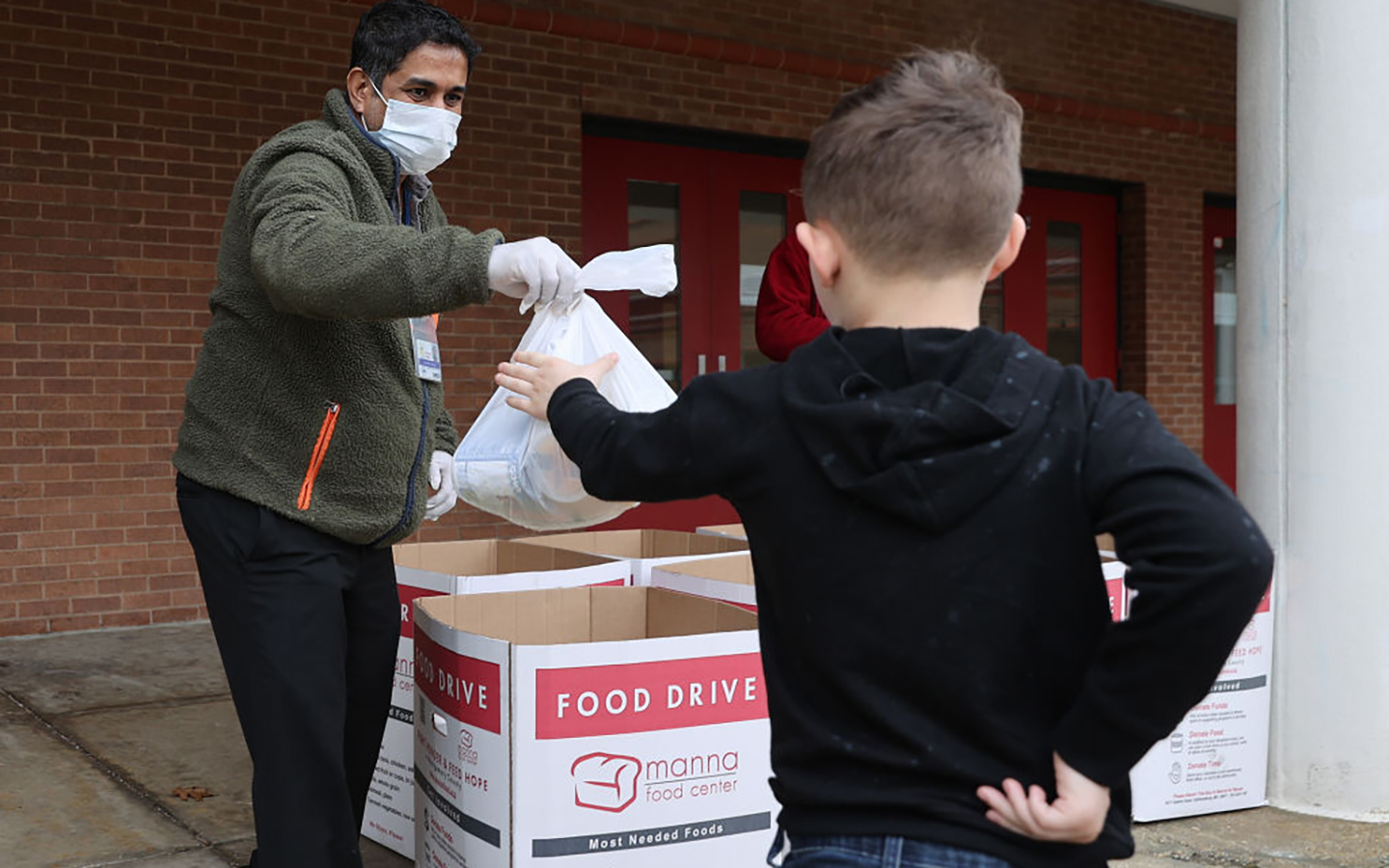Buher: Now is the Moment for a New Children’s Rights Movement
America's young people are victims of the dissonance between government leaders' purported commitment to children and kids' actual lives

Get stories like these delivered straight to your inbox. Sign up for The 74 Newsletter
In the last three weeks, the United States has witnessed babies starving because of a nationwide shortage of infant formula and young students murdered in their elementary school. If you believe these atrocities will spark a comprehensive moral or policy response from our elected federal leaders, you are mistaken.
Even if Congress acts, a neutered piece of legislation, fragmented by poisonous partisanship and special interests and addressing the symptoms of just a single problem, will do little to change the status quo for America’s kids.
At best, the framework being considered in the Senate in response to the mass murder at Robb Elementary School is incrementalism that doesn’t meet the moment. A dramatic social and cultural shift that mobilizes and sustains the nation’s collective consciousness on issues impacting young people is required.
Now is the moment for a new, independent coalition focused exclusively on expanding and protecting children’s rights.
Youth rights as a movement is not a novel idea. In 1836, Massachusetts passed the first child labor law that required at least three months of school per year for factory workers under age 15. This led to campaigns focused on freedom of expression, prevention of violence and abuse, expansion of privacy and creation of equitable academic opportunities.
But this precipice in history demands more. While this month feels particularly horrific, the savagery that has recently visited America’s children is a microcosm of the dissonance between federal leaders’ purported commitment to children and kids’ actual lives.
Need proof? Look no further than the decade-long run of inconsequential reactions to crises and trends that have horrendously impacted children’s ability to play, learn and thrive.
In 2012, 20 kindergartners at Sandy Hook Elementary School were murdered in their classrooms. No significant federal gun control legislation has been passed in the decade since. In 2020, according to the Centers for Disease Control and Prevention, firearms-related injuries became the leading cause of death for children ages 1 to 19.
In 2014, 9,000 children were exposed to lead-contaminated drinking water in Flint, Michigan. It took two years and a federal court order to ensure that every child in Flint had consistent access to safe water. Until that point, it has been up to each family to find water themselves.
In 2015, according to a study by Pew, 62% of parents with infants or young children — regardless of income level — found it was difficult to find child care in their community that was both affordable and high-quality. As of 2021, families with infants or preschool-aged youngsters would need to spend, on average, approximately $16,000 annually to cover child care costs; this represents over 20 percent of the U.S. median income for a family of three.
In 2016, Larry Nasser, team doctor for the United States women’s national gymnastic team and Michigan State University, was charged with 22 counts of sexual abuse of a minor after decades of preying on girls and young women. A U.S. Department of Justice Office of Inspector General report concluded, “senior officials in the FBI Indianapolis Field Office failed to respond to the Nasser allegations with the utmost seriousness and urgency that they deserved and required.” Between the first complaint to the FBI and Nasser’s arrest, he molested at least 70 more girls.
In 2018, The Trump administration began separating children from their families at the United States-Mexico border and housing them in chain-link enclosures. In summer 2021, the Biden administration’s Interagency Task Force on the Reunification of Families announced it had reunited 36 families, a minuscule proportion of the 5,600-plus children who had been separated from their families at the border.
In 2020, 6,643 young people, ages 0-24, died of suicide. In a recent 60 Minutes segment focused on child mental health, an emergency room physician said the average wait time to get an appointment with a therapist is 48 days — and for kids, it’s usually longer.
In 2021, homeless shelters housed 131,377 people who were part of a family with at least one adult and one child under the age of 18. In 2010, the United States Interagency Council on Homelessness announced its goal to end youth homelessness by 2020 as part of its Opening Doors Strategic Plan, the nation’s first such comprehensive strategy.
By many measures, from education to life expectancy, being born today in America provides substantially more opportunity to pursue a happy life than at any other time and place in human history. But this does not negate the trauma that has affected children in the last decade in communities urban and rural, red and blue, poor and rich. Nor does it excuse the unequal and unworthy reaction from leaders who are wholly indifferent toward children, incompetent or both.
The challenges underlying many of these issues are complex and difficult to address. But these barbarities are now more features than bugs. We simply can’t rely on top-down action because our leaders have proved unreliable at creating institutions that uniformly keep kids healthy and safe.
That is why now is the time to funnel our collective shock, sadness, disappointment and fury into a new children’s rights movement that seeks to reshape the contours of stale politics and pulls fragmented interests under new and bigger tents. To do so, this movement must be built on love — for, as Dr. Martin Luther King Jr. said, “justice is really love in calculation. Justice is love correcting that which revolts against love.”
This movement must be built on this moral foundation, and it cannot rely only on the standard-bearers of political and organizing power. New technologies, messages and institutions must emerge to invigorate this movement, created and led by youth and families.
This new movement must be willing to engage in nonviolent protest, boycotts and targeted civil disobedience. It must couple those tools with evidence-based policymaking and emerging technologies toward the singular goal of upholding the inalienable rights of every American child.
Building a movement like this will be slow, expensive and hard. But the cost of inaction would be a moral bankruptcy of the most bitter and terrifying kind.
Get stories like these delivered straight to your inbox. Sign up for The 74 Newsletter


